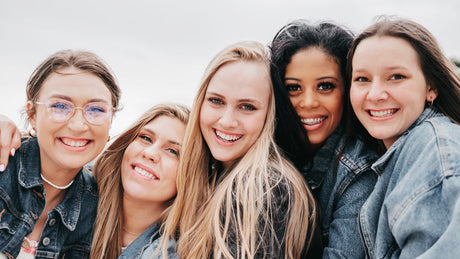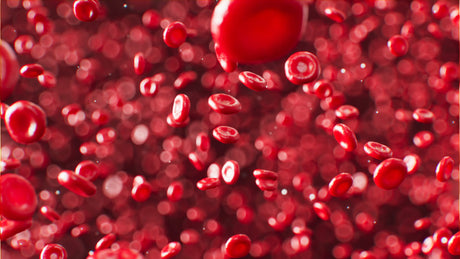So, you've brought the glowing promise of red light therapy into your home – that sleek device promising everything from smoother skin to less pain. But now you're faced with the big question: How often should you actually use it? Is it a daily ritual, a few times a week, or just an occasional pick-me-up?
The truth is, there's no single, one-size-fits-all answer. Think of red light therapy like exercise or healthy eating – consistency is key, but the exact frequency depends on your goals, the device you're using, and how your body responds. Let's break it down.
Understanding the Basics: Why Consistency Matters
Red light therapy, or photobiomodulation (PBM), works by delivering specific wavelengths of red and near-infrared light to your cells. This light stimulates your mitochondria – the "powerhouses" of your cells – to produce more ATP (energy). More cellular energy means your cells can function better, repair themselves more efficiently, and regenerate.
This isn't an overnight miracle. Building up these cellular benefits takes time and consistent exposure. Just like you wouldn't expect to run a marathon after one jog, you won't see significant, lasting results from a single red light session. Regular use helps to compound these cellular improvements, leading to more noticeable and sustained benefits.
General Guidelines for At-Home Use
Most experts and device manufacturers recommend a frequency that balances efficacy with practicality. Here’s a general framework:
-
Frequency: Aim for 3 to 5 sessions per week. This seems to be the sweet spot for many people and various conditions.
-
Session Length: Typically 10 to 20 minutes per targeted area. If you're treating a large area or multiple areas, your total session time will be longer.
-
Consistency: This is the golden rule. It's better to do shorter, consistent sessions than sporadic, long ones.
Tailoring Frequency to Your Goals
While the general guidelines are a good starting point, your specific objectives will heavily influence your routine.
For Skin Rejuvenation (Anti-Aging, Fine Lines, Collagen Production)
-
Initial Phase (First 4-8 Weeks): Aim for 4-5 times per week. During this period, you're trying to kickstart collagen production, reduce inflammation, and improve skin tone. Consistency is paramount to stimulate cellular turnover and repair.
-
Maintenance Phase: Once you start seeing results, you can often reduce the frequency to 2-3 times per week. This helps maintain the benefits you've achieved. Some people even drop to once a week for maintenance, depending on their skin's needs and how quickly they want to see results.
-
Session Duration: 10-15 minutes per area.
For Pain Relief & Muscle Recovery (Joint Pain, Sore Muscles, Inflammation)
-
Acute Pain/Initial Injury: For new injuries or acute flare-ups, you might even consider daily sessions for the first few days, especially if your device allows for short, focused treatments.
-
Chronic Pain/Regular Recovery: 3-5 times per week is often recommended. This helps reduce inflammation, promote circulation, and support tissue repair. Many athletes use it pre or post-workout for recovery.
-
Session Duration: 10-20 minutes, focusing on the painful or recovering area. For deeper penetration, near-infrared light is often more effective for pain.
For Hair Growth
-
Consistency is Crucial: Hair growth cycles are long, so patience and consistency are key. Aim for 3-5 times per week.
-
Session Duration: Typically 10-20 minutes, ensuring the light reaches your scalp evenly. Don't expect immediate results; it can take several months to see noticeable hair growth.
For Mood & Energy
-
Daily or Every Other Day: Some people find that consistent, shorter sessions (e.g., 10 minutes) in the morning can help with energy levels and mood regulation, similar to how light therapy lamps are used for seasonal affective disorder (SAD). Experiment to see what feels best for you.
For Wound Healing & Scar Reduction
-
Intensive Phase: For active wounds or new scars, daily sessions (or every other day) can be highly beneficial to accelerate healing and minimize scarring. Always consult with a healthcare professional for wound care.
-
Session Duration: 10-15 minutes on the affected area.
What About Overdoing It?
This is a common concern, but thankfully, red light therapy has a very good safety profile. Unlike UV light, it doesn't cause damage or burning.
However, there's a concept called the "Arndt-Schulz law" or "biphasic dose response," which suggests that while a certain amount of stimulation is beneficial, too much can be less effective or even inhibitory. In practical terms, this means:
-
More isn't necessarily better: Blasting yourself with red light for hours won't speed up results and might even diminish them slightly. Sticking to the recommended session lengths is usually ideal.
-
Listen to your body: If you feel any discomfort (which is rare), reduce your session time or frequency.
Tips for Success at Home
-
Read Your Device Manual: Every red light therapy device is different. The manufacturer's instructions for frequency, distance, and session time are your best first resource. They've designed the device with specific output parameters in mind.
-
Start Slowly (If You're Sensitive): If you have very sensitive skin or are new to light therapy, you might start with shorter sessions (e.g., 5-7 minutes) and gradually increase as your skin acclimates.
-
Be Consistent: This cannot be stressed enough. Set a reminder, incorporate it into your routine (e.g., while watching TV, listening to a podcast, or during your morning coffee).
-
Target Areas Effectively: Position your device so the light directly hits the area you want to treat. For larger panels, you can treat your whole body, but for smaller devices, you'll need to move it around.
-
Clean Skin: For skin treatments, ensure your skin is clean and free of heavy lotions or makeup that could block the light.
-
Protective Eyewear: While red light is generally safe for eyes, the intensity of the LEDs can be bright. Many devices come with protective eyewear; it's wise to use it, especially when treating your face.
-
Patience: Results don't happen overnight. It can take several weeks to a few months to see noticeable improvements, especially for conditions like skin aging or hair growth.
-
Combine with a Healthy Lifestyle: Red light therapy is a fantastic tool, but it works best as part of a holistic approach to health, alongside good nutrition, regular exercise, adequate sleep, and stress management.
Ultimately, the best frequency for your at-home red light therapy journey will be one you can consistently stick to, tailored to your specific goals, and guided by your device's recommendations. Start with the general guidelines, pay attention to how your body responds, and adjust as needed. Happy glowing!









